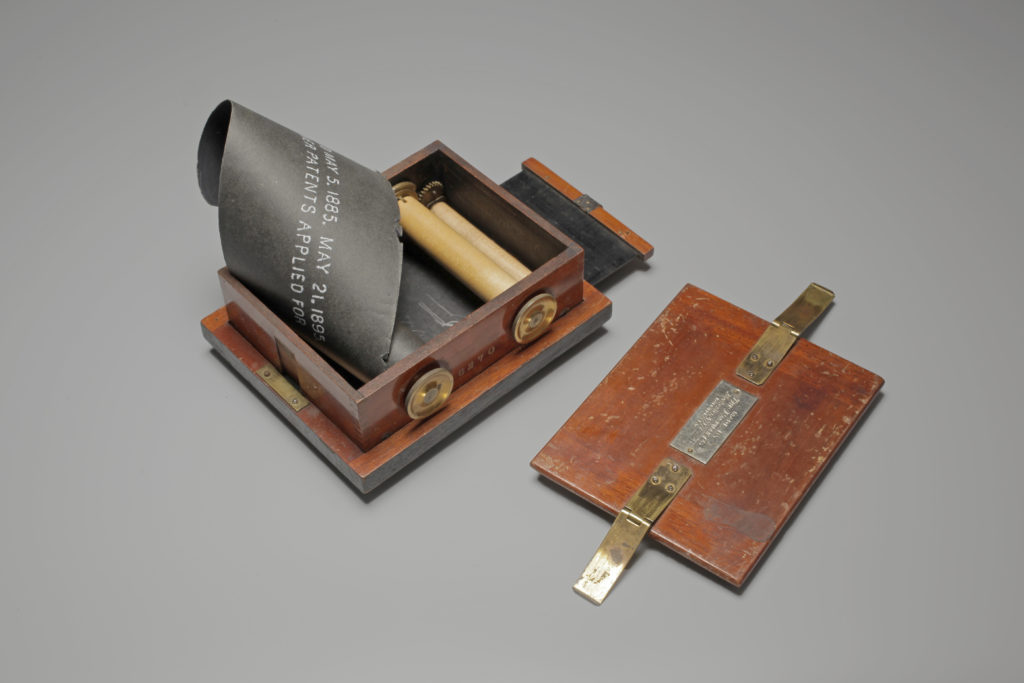From one spool to the other
Many attempts were made to replace the glass plate by a flexible paper strip. They culminated in the middle of the 1880s with the success of the roller chassis of George Eastman and William Walker, and the American Film.
The glass plate, used since the middle of the 19th century as the base for photographic emulsion, proved to have a number of disadvantages: its fragility, its bulk and its weight. A return to the use of a sensitive paper, which produced in long strips feeding from one bobbin to the other, was quickly developed.
Although the first known film to be drawn by a roller mechanism already dates back to 1854, it was not until the efforts of George Eastman that such a mechanism became popular with the public. Founder of what was to become the Kodak brand, Eastman wanted to put photography within everybody’s reach. In 1884-1885, he launched the negative in roll form with a bobbin chassis.
As the grain of the base paper could still be seen on the photograph, Eastman soon after produced the American Film, an advanced film that made it possible to separate the base paper from the sensitive layer after development. When printing, the sensitive surface was transferred onto a glass plate, which guaranteed a better picture definition due to its transparency.


